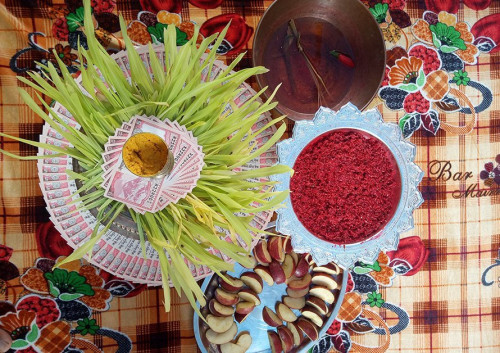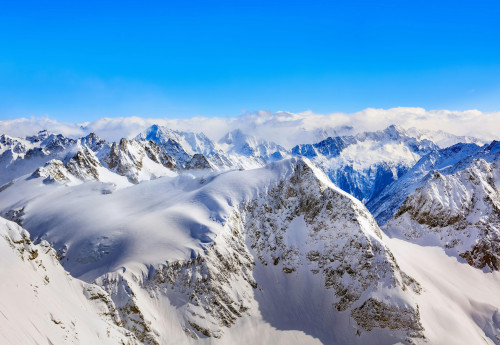27th Apr, 2025
Winter Treks In Nepal 2025
- Magnificent Himalayan Treks
Nepal's winter begins in December and persists up to February. The majority of people, who come mostly from Europe or North America, find winters to be harsh with snow falls in their experiences.
They are mistaken. Winter in Nepal is not harsh in the majority of regions, and winter treks in Nepal are typical.
If you see internationally, in winter, cold air from the north pole moves south, reaching Europe and almost all of North America. Due to this cold air, the majority of areas of North America and Europe experience cold temperatures with heavy snowfall. However, this does not happen in Nepal.
In Nepal's northern border is the giant Himalayas, and these Himalayas protect Nepal from the cold wind coming towards Nepal. Hence, most of Nepal, comprising mostly mountains, plains, and valleys, doesn't receive snowfall. Most of the snowfall Nepal experiences is due to altitude.
Yes, the snowfall comes at the higher altitudes during winter, but this happens in specified zones. Hence, winter trekking is available in Nepal.
Below are some of the trek options you can do for Nepal winter treks. On the lower side, you can find the winter temperature of Everest Base Camp going down to as low as -15℃. In most other treks, you can get -3℃ at most trekking altitudes.
Below are some of the trek options you can do for Nepal winter treks-
Table of Contents
Everest Base Camp Trek
The Everest Base Camp Trek is one of the best winter treks in Nepal and offers an unforgettable experience in the heart of the Himalayas.
It offers a glimpse of the breathtaking view of Mount Everest and nearby peaks while introducing one to the prosperous Sherpa culture of the Khumbu region.
It is perfect for those who desire a winter trek with breathtaking natural beauty, cultural exposure, and high-altitude trekking.
In the winter months, the trek transforms into something even more magical, with snow-covered trails, crisp air, and clear skies.
The towering peaks of Everest, Lhotse, and Nuptse dusted in snow offer some of the most incredible panoramic views you’ll ever see. The winter atmosphere adds a serene, peaceful feeling to the trek, creating an unforgettable experience.
This winter trek is ideal for an individual looking for a challenging to demanding experience, but still appreciating some of the world's finest mountain scenery.
The Everest Base Camp Trek is an unforgettable and rewarding experience for nature lovers, adventure enthusiasts, and for anyone who wants to explore the culture and majesty of the Everest region in winter.
Annapurna Base Camp
Annapurna Base Camp (ABC) is the top destination for trekkers in Nepal, offering breathtaking views of the Annapurna Massif. Standing at an altitude of 4,130 meters (13,550 feet), it is centrally located in the Annapurna Sanctuary, surrounded by behemoth peaks such as Annapurna I, Machapuchare, and Hiunchuli.
The ABC trek takes travelers through varied landscapes, from dense rhododendron forests to terraced fields and isolated mountain villages. Trekkers are exposed to local Gurung and Magar cultures, as well as to breathtaking sunrise and sunset views.
Suitable for moderate-level trekkers, the trek combines nature with a sense of achievement, thus a memorable Himalayan adventure.
Annapurna Circuit Trek
The Annapurna Circuit Trek is one of the most renowned trekking routes of Nepal, renowned for its breathtaking diversity of landscapes and cultures. It is 160-230 km (100-145 miles) in length, depending on the route followed, and goes around the Annapurna Massif, traversing the Thorong La Pass, which, at 5,416 meters (17,769 feet), is the highest.
The trek offers a mix of subtropical forests, farmland, high-altitude dry deserts, and majestic mountain scenery. The trekkers pass through vibrant villages inhabited by ethnic groups like Gurung, Thakali, and Tibetan communities on the trek.
The trek offers a mix of scenery and encounters with cultures and is an experience of a lifetime.
Ghorepani Poon Hill Trek
With a maximum height of merely 3,210m, Ghorepani Poon Hill trek is a popular winter trekking route. A panoramic sight of several stunning peaks, such as Hiunchuli, past Annapurna South to Annapurna I (8,097m/26,566ft) Gangapurna, Khangsar Kang, Annapurna III, and Machhapuchhare, can be had from the Poon Hill viewpoint.
During winter, the upper-level trails become snowed-in, providing a white blanket layer that is extremely scenic. Treks to Ghorepani Poon Hill during winter are suitable for almost everyone.
If you want to experience the Himalayas in the Annapurna region as they look snow-covered, then winter trekking is your only choice.
Kopra Danda Trekking
It is another fine winter trek you can undertake. As is the case with the Poon Hill trek, this trek is also within the Annapurna region but on a newer path. The trek will traverse ethnic villages into fine landscapes typical of this reason.
From the summit of Kopra Danda, you can see several mountain peaks like Machhapuchhre, Nilgiri, Hiunchuli, and Annapurna ranges. You can also take a side trip to the nearby Kaire Lake during your trek to Kopra Danda.
The reflection of snow peaks on Kaire is very satisfying.
Mardi Himal Trek
Mardi Himal Base Camp (4,500m) is accessible during winter and is simply breathtaking during this period. The trekking trail lies near Pokhara, the "tourist capital of Nepal.".
Your trek will pass through oak and rhododendron forests, suspension bridges, and traditional ethnic villages. This is a new trekking trail, moderate, and the views stunning.
When you trek during winter, you can have good sight of Annapurna, Dhaulagiri, Machhapuchhare, and Manaslu. This is a new trail, and you can find fewer trekkers on the trails during winter.
Langtang Trek
Langtang Trek is one of the closest trek from Kathmandu and reaches an altitude of 4,773m at Kyangjin Ri. This area has numerous glaciers that are brought to life and look stunning, especially during winter.
Kyangjin Ri offers a panoramic view of the Langtang range that looks beautiful with winter snow. Langtang National Park is renowned for wild-life species such as Himalayan monal, Himalayan tahrs, wild dogs, and snow leopards.
Likewise, you will get to witness some of the various glaciers in their best, such as the beautiful Lirung and Kim Sung glaciers.
And, of course, there is the sacred lake - Gosainkunda, which remains largely un-frozen even in wintry cold. The light snowfall within the trekking region does not actually inhibit the trek but provides stunning views.
Tamang Heritage Trail
Tamang Heritage Trail is a magical trekking trail in Nepal that offers a combination of magnificent Himalayan scenery and rich cultural experiences. In Langtang, the trail is most suited for those wanting to explore Tamang people's culture and life, the successors of Tibetan heritage.
This mid-level trek winds its way through rural villages, rice-terraced landscapes, and tropical forests, the best of which are hot springs at Tatopani, Langtang and Ganesh Himal panoramas, and exquisitely built monasteries.
Ruby Valley Trek
This is another excellent winter trek you can undertake. Ruby Valley is located between Langtang National Park and Manaslu Conservation Area. The highest altitude of the trek is Pang Sang Pass at 3,845m. The trekking trail goes through the dense rhododendron, pine, oak, and bamboo woods.
You will also see suspension bridges, profound gorges, and waterfalls. Other than that, you will also get a chance to observe the culture and customs of Tamangs, Gurungs, Brahmins, and Dalits.
The Ganesh Range, Lamjung Himal (6,800m), Langtang Lirung (7,300m), and Manaslu (8,163m) look even more stunning in winter compared to other seasons of the year.
Why Choose Winter for Trekking in Nepal?
Winter trekking is the off-season trekking Nepal where the trekkers get the winter hiking benefits. The trails are peaceful.
You will see the fewer crowds , fresh snow . The visibility is clear and mainly you will get to explore the unique village experiences. There might be slightly change in the weather patterns but thats pretty normal when you are exploring the panoramic mountains.
There are several cons that makes you feel trekking in Nepal during winter is worth.
Challenges of Winter Treks in Nepal
Trekking to winter in the majestic Himalayas is challenge in Nepal. The winter trek difficulties is unavoidable. There are high chances of winter altitude sickness as the trails are in height.
The cold temperatures makes the journey more risky. There are chances of trail blockage due to snow. Make sure there you adapt the safety precautions before you take risk on your life.
Guided vs. Independent Winter Trekking
Its best if you are trekking with a professional guide. However, recent survey shows that the solo trekking are extremely at hype. They want to explore the unexplored places on their own. Solo trekking Nepal is possible but comparatively dangerous.
If you want to go winter trekking with a guide, magnificent Himalayan is always with you.
Best Time Within Winter Season
There are favourable timeframe within winter season. You can trek to December ,January and February. Pro-tip: these are the winter of the month and extremely cold.Make sure you carry all the necessary equipments with you.
Likewise, you can also enjoy the festival highlights like Tamu Lhosar, Maghe Sankranti etc where one can enjoy the different culture and festivals in Nepal.
Conclusion
You can explore trekking during Autumn and Spring for the best experience. You will see the blooming Rhododendrons , clear visibility and more number of trekkers. But winter trekking is different. It offers you peace, you will get special accommodations and great hospitability by the lodge owners and so on.
For more information connect with Magnificent Himalayan Treks and Expedition .
Recent From Blog
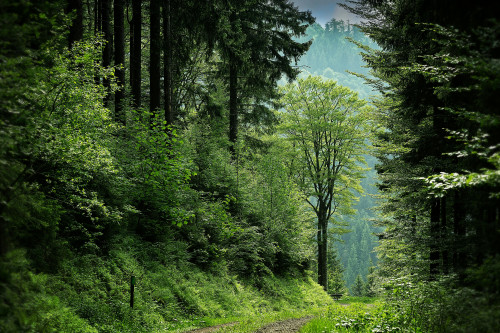
13th Oct, 2025
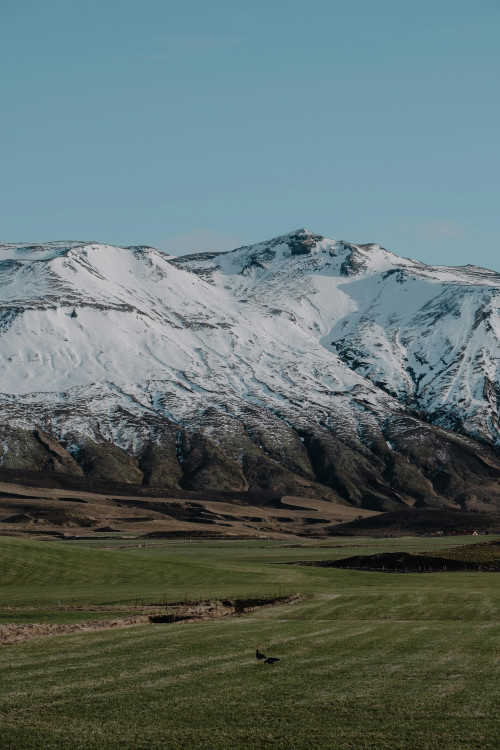
9th Oct, 2025

21st Sep, 2025
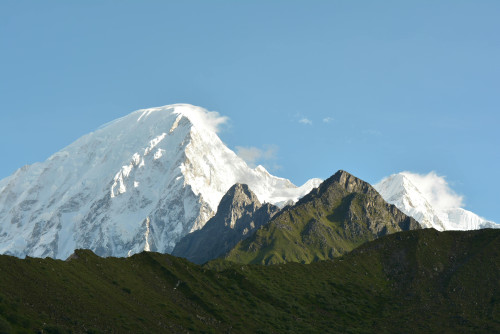
18th Sep, 2025

14th Sep, 2025

3rd Sep, 2025

28th Aug, 2025
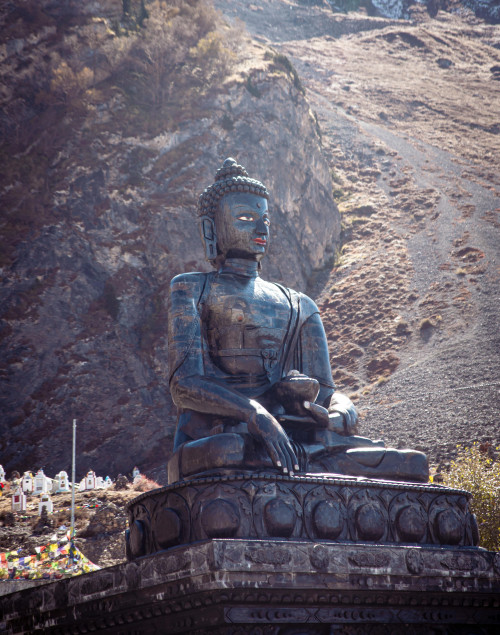
25th Aug, 2025
